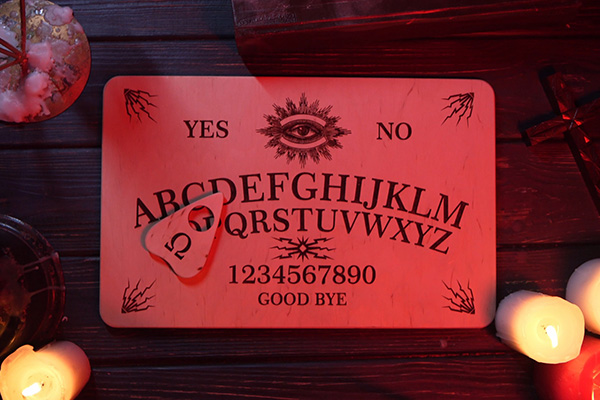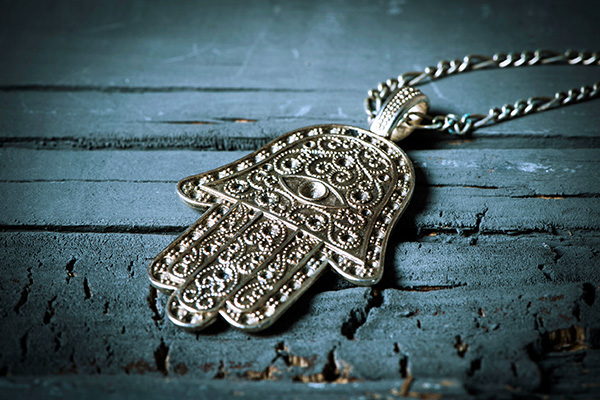Uncover the Intriguing Horizons of the Ouija Board: More than Just a Game
 A client sought my insight on the Ouija board after learning her teenage son had participated in the “game” at a friend’s home.
A client sought my insight on the Ouija board after learning her teenage son had participated in the “game” at a friend’s home.
Honestly, I find it challenging to even write about this topic, which reveals my genuine thoughts and emotions concerning it.
The Ouija board might appear as a harmless board game or an entertaining psychic instrument for spiritual exploration. Yet, there are substantial reasons to approach this supposed “game” with considerable caution, if not avoid it altogether.
In my experience as a spiritual counselor, I’ve assisted several clients over the years who engaged with the Ouija board and other questionable forms of spirit communication, including necromancy. Although interacting with the spirit world can provide significant opportunities for healing, growth, and connection, it is not something to be taken lightly.
Enhancing your intuition and spiritual connection is a beautiful and uplifting journey. It enables you to become more aware of the unseen and to reach out to your departed loved ones, ancestors, spirit guides, and angels. However, this form of communication and interaction requires respect, reverence, and sincere intention.
Well-meaning practices such as divination, psychic readings, and mediumship are fundamentally different from opening yourself indiscriminately, without safeguards, to any and all spiritual beings and energies.
When you recklessly open yourself through the Ouija board or other unchecked methods, you relinquish your ability to control who and what enters your energy sphere and interacts with your soul. It’s akin to throwing open the door to your aura and allowing a crowd of strangers inside, some of whom may not harbor the best intentions.
Never invite in a lesser evil, for greater horrors will inevitably follow in its wake ~ Baltasar Gracián
You lack a filtering mechanism, gatekeepers, safeguards, or protective barriers. This is precisely why I advise against using the Ouija board or any unstructured method for spirit communication.
Your departed loved ones, ancestors, spirit guides, and divine angels serve as protective buffers, permitting only those energies aligned with our highest good. When you reach out through them, you reap the benefits of their wisdom, discernment, and guarding. Without their presence, you might inadvertently attract lower vibrational entities into your life, which can adversely affect your physical, emotional, mental, and spiritual health.
The Mysterious Origins Of The Ouija
Also referred to as a spirit board, talking board, or witch board, the Ouija board is a flat, rectangular wooden surface inscribed with the Latin alphabet, numbers 0-9, the words “yes” and “no,” and sometimes “hello” and “goodbye,” along with other symbols. A planchette, typically a small heart-shaped piece of wood or plastic, serves as a mobile indicator to spell out messages from spirits during a séance. Participants lightly touch the planchette, which glides across the board, pointing to letters or symbols that form words.
Although the Ouija board is commodified as a board game, its true purpose was originally to facilitate spirit communication. Not much is known about its actual origins, except that it emerged during 19th-century spiritualism, a belief system rooted in diverse cultural and religious practices centered on communication with the spirit world and belief in an afterlife. Influences that may have set the stage include shamanism, where shamans act as intermediaries between the physical and spiritual worlds, and mesmerism, which investigated the manipulation of an invisible force for healing through trance.
Early religious movements in the United States, like the Quakers, also encouraged direct personal experiences with the divine, while Enlightenment thinkers investigated the essence of the soul and consciousness. Additionally, ghost tales and folklore across cultures expressed a longstanding interest in spirits, laying the groundwork for spiritualism to emerge as a formal movement and belief system.
Factors contributing to the rise of spiritualism and mediumship in the mid-1800s included significant loss of life from wars, diseases, and industrial mishaps. Mass fatalities, quick industrialization and urbanization, along with substantial social transformations, fostered a sense of insecurity and erosion of traditional values. Spiritualism offered comfort and a sense of spiritual connection. It also responded to scientific progress and an emerging fascination with the esoteric.
The movement gained traction through prominent figures such as the Fox sisters – Margaret, Kate, and Leah – who communicated with spirits at their home in Hydesville, New York. Séances, table-turning, and automatic writing became common practices during this era, comforting a society grappling with short life spans, war, and pervasive grief.
As early as 1886, some spiritualists commenced using a “talking board” similar to the contemporary Ouija board, particularly at their gatherings in Ohio. In the late 1800s in Chestertown, Maryland, Charles Kennard, a businessman with a talent for seizing opportunities, along with E.C. Reiche, a coffin maker and undertaker, were inspired by early spiritualist boards and began collaborating to create their own edition.
When Kennard later moved to Baltimore seeking investors for his talking board innovation, he faced numerous rejections until local attorney Elijah Bond found interest in the project. With his sister-in-law, the renowned medium Helen Peters, Bond helped patent the board in 1891. Interestingly, it was tested and confirmed to function at the U.S. Patent Office before the patent was granted, adding to the allure and mystery of the Ouija.
During World War I, spiritualist Pearl Curran further popularized the board as a divining tool, altering its perception and application in spiritual practices. In modern times, it is advertised as a fun novelty item that connects the material with the immaterial. Although “Ouija” is a registered trademark of Hasbro (which acquired Parker Brothers), the term is often generically used to denote any similar talking board employed for spirit communication.
A small amount of knowledge about the occult can be perilous. Unless used for benevolent purposes, disaster will ensue. That is Cosmic Law ~ Clarence Upson Young
Engaging With Spirits Is Not A Game
Engaging with spirits, whether via mediumship, channeling, divination, or other occult practices, should never be taken lightly. It is a sacred art that demands preparation, respect, and protection.
When conducted properly, communicating with spirits can be enlightening, insightful, and healing. It can provide comfort and closure to those mourning the loss of loved ones. It can deepen our spiritual practice and enhance our understanding of karmic lessons and soul journeys. Moreover, it can grant us divine inspiration and guidance, along with insights into our futures and destinies.
This is not mere entertainment. If we approach spiritual communication with a careless mindset, we undermine the sacredness of the bond. Particularly, mediumship must be exercised with caution.
A responsible and seasoned medium understands how to distinguish between different types of energies and spirit entities, recognizing the significance of invoking protection before engaging with unseen realms. This cannot be achieved with a piece of cardboard and a plastic pointer.
Opening yourself to the spirit realm without adequate preparation and safeguards is potentially a perilous endeavor. It’s similar to igniting a match in a dense, dry forest. Once the flames take hold, they can swiftly spiral out of control, consuming everything in their path before you even realize the extent of the danger you’re in.
My Professional Experience With Victims
In my professional journey, I have assisted various clients who mistakenly treated the Ouija board as a harmless game or an amusing experiment to delve into the paranormal. Regrettably, they swiftly discovered that it was far from harmless. These clients approached me in distress, confusion, depression, anxiety, and fear, seeking ways to liberate themselves from the intrusive negative energies or entity attachments acquired by “playing” Ouija.
None of the entities encountered through the Ouija board were friendly spirits. Rather, they were all energies that thrived on fear, confusion, destruction, and chaos. Some clients reported nightmares, disturbances within their homes, mental health struggles, and even physical symptoms of distress.
Considerable spiritual healing and energy work were necessary to cleanse their energy fields and help restore a sense of tranquility. Many felt vulnerable and shaken, realizing that what they had perceived as merely a “game” had serious and real consequences. When you open yourself to the spirit world without protection or intent, you may become a magnet for energies you wish to avoid.
While the board is a constant presence in American pop culture, very little information is available about its origins…the history of the Ouija is as enigmatic as the operation of the board itself ~ Baynard Woods
The Significance Of Spiritual Protection
So, how can you safeguard yourself if you’re curious about exploring spirit communication in a secure and sacred manner? The essence lies in intention, preparation, and calling upon your guides.
Prior to engaging in any type of spirit communication, whether it’s divination, channeling, mediumship, or invocation, it’s vital to ground and shield your energy while setting a clear intention. Are you hoping to connect with a loved one who has passed on? Are you seeking guidance? Are you merely inquisitive about the spirit realm? Your intention serves as a filter, directing your energy toward a distinct goal or outcome. Without it, you may inadvertently expose yourself to various unwanted energies and spirit attachments.
In the most severe cases, it could even result in spirit possession. In such instances, a negative or hostile entity takes partial or full control over a person’s physical body, mind, or energy, influencing their thoughts, actions, and emotions in harmful manners. This can present as drastic shifts in personality, unpredictable physical symptoms, or a feeling of disconnection from one’s self.
Unlike healthy spirit communication, in which guides and loved ones connect respectfully, possession involves an intrusive force that seeks to influence or drain the individual’s energy, frequently causing distress, fear, and disruption to everyday life. Exorcising such an entity usually necessitates the assistance of a trained spiritual practitioner or healer to purge the energy and restore equilibrium.
Your guides provide a crucial layer of protection. These spiritual beings are aligned with your highest good and serves as gatekeepers, permitting entry only to energies that resonate with your path. Before attempting to make contact with any spirits, take a moment to invoke your guides. This can be done through prayer, meditation, or simply stating aloud that you seek their protection and guidance.
It’s also essential to construct a sacred environment for your spiritual practices. Whether it’s a dedicated room, a small altar, or even just a cozy candlelit nook, creating a space where you feel secure and centered establishes the right ambiance for the work ahead. Protective crystals, like black tourmaline or amethyst, along with visualization techniques, can also help shield you from negative energies.
While the Ouija board may present itself as an alluring avenue for exploring the spirit world, it carries significant hazards. Communicating with spirits is a sacred endeavor that requires respect, intention, and protection. If approached as a game or casual experiment, the repercussions could be harmful and enduring.
Safeguard yourself by honoring the sanctity of the process. Reflect on positive experiences, call upon your guides for defense, and ensure you are grounded and prepared before engaging in any spiritual work. This will enable you to explore spiritual realms safely while keeping your energy and home protected from unwanted influences.
|
Satya resides in Northern California and is a natural Clairvoyant, Empath, Conduit, educator, author, animal enthusiast, healer, Reiki Master, and an advanced yoga instructor. She has offered invaluable psychic insights to Hollywood celebrities, sports figures, and everyone in between. As a multi-dimensional Intuitive, equipped with many distinctive gifts, she can provide a portal into the past as well as a gateway to a more joyful future. Through her long-distance energy practices, she offers healing to both individuals and animals! She swiftly identifies karmic links from past lives that influence present circumstances, assisting clients in navigating through them efficiently. For precise solutions to almost any urgent issue, you can connect with Satya at PsychicAccess.com. |
The Ouija board is a device that has captivated and intrigued individuals for generations. Frequently viewed as a mere game, it has a profound history and greater significance that extends beyond simple amusement. In this article, we will delve into the captivating intricacies of the Ouija board, revealing its origins, uses, and the controversies that accompany it.
The Ouija board, also known as a spirit board or talking board, is a flat surface marked with letters, numbers, and other symbols. It typically features a movable indicator, referred to as a planchette, which is utilized to spell messages from spirits or other supernatural forces. The board is commonly employed in a séance or as a divination method.
The beginnings of the Ouija board can be traced back to the late 19th century during a time when spiritualism was on the rise. Spiritualism is a belief structure that posits that the spirits of the deceased can communicate with those still living. Initially, the Ouija board was marketed as a parlor game, however, it rapidly gained the reputation for its supposed capacity to connect with the spirit realm.
The contemporary version of the Ouija board was patented in 1891 by Elijah Bond, Charles Kennard, and William H.A. Maupin. Its popularity soared during World War I when many sought comfort and connection with their departed loved ones. Since then, the Ouija board has become a fixture in pop culture, featured in films, literature, and television programs.
While many regard the Ouija board as an innocuous pastime, others assert it can serve as a powerful medium for interfacing with the spirit realm. Some users claim to have received precise and meaningful messages from the board, while others dismiss it as nothing more than the result of subconscious movements or the ideomotor effect.
The ideomotor effect is a psychological phenomenon where a person makes unconscious movements without recognizing it. Skeptics contend that the movement of the planchette on the Ouija board is attributable to this effect, rather than any supernatural influence. They argue that the messages obtained are merely a reflection of the participants’ own thoughts and beliefs.
Regardless of skepticism, numerous reports recount eerie and unexplainable occurrences related to the Ouija board. Many users assert to have encountered spirits, secured accurate predictions, or experienced strange phenomena while utilizing the board. These narratives have ignited both interest and fear surrounding the Ouija board.
It’s vital to acknowledge that utilizing the Ouija board can be a profoundly personal and potentially intense endeavor. It is advisable to approach it with caution and respect. Some believe that the Ouija board can open channels to negative or malevolent entities and caution against using it without adequate knowledge or protection.
In conclusion, the Ouija board is much more than a simple game. Its roots in spiritualism, its claimed ability to connect with the spirit world, alongside the controversies it raises, establish it as a captivating tool for exploration and self-discovery. Whether you perceive it as a harmless pastime or a powerful gateway to the unknown, the Ouija board continues to fascinate and intrigue those willing to venture into its depths. Continue reading















/kendra-american-flag.jpg-56a420a13df78cf77280f062.jpg)